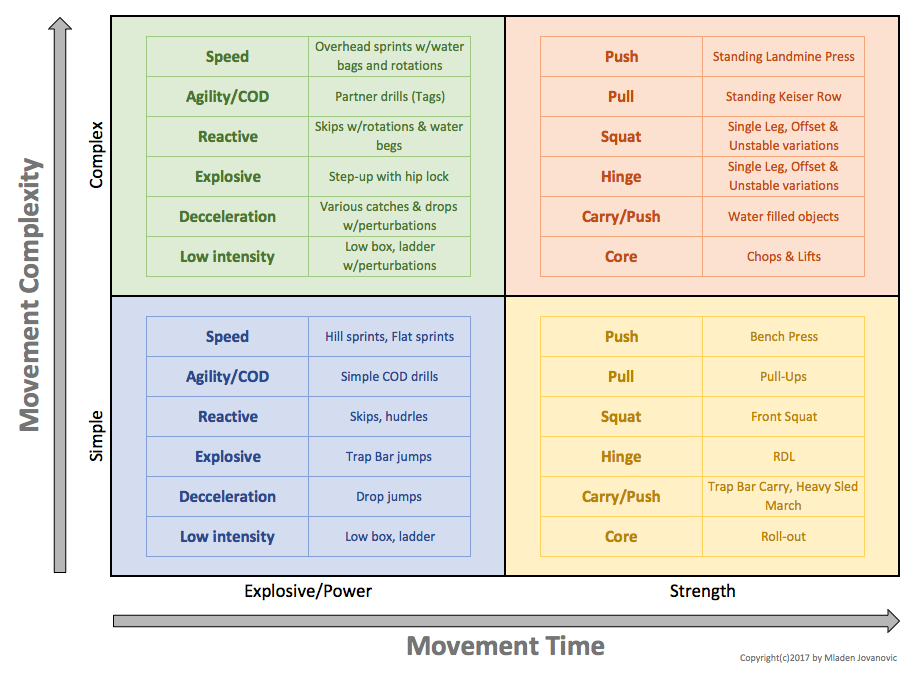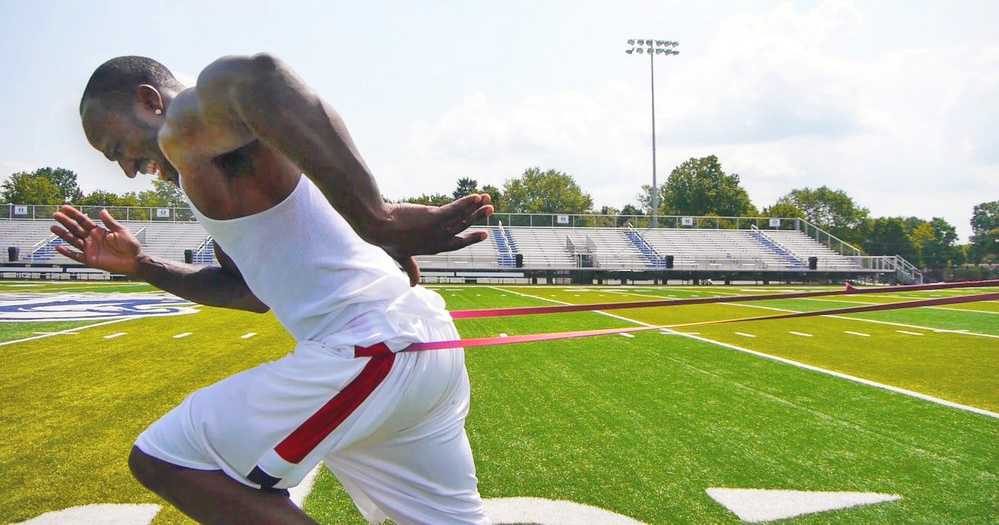Excellent Videos on Frans Bosch Speed, Power and Agility Drills
One of the few books that really got me thinking (and rethinking) was Strength Training and Coordination by Frans Bosch. I highly recommend reading this book, even if you do not agree with the author. You can read my Frans Boch book review. Unfortunately, after reading this book you might end up confused about how to apply this knowledge and exercises in practice. In my opinion, there are two issues – first one is related to the overall position of the “Frans Bosch drills” in the exercise classification. The second one is related to the library of the various drills that could be used (for specific objective you want to address).
Locations of the “Frans Bosch Drills” in exercise classification
There are numerous classifications that could be used for specific purposes. The key is to avoid falling in love with one. Bondarchuk classification is quite popular (for more information read Periodization Confusion, Physical Preparation for Soccer, MMA Training Classification) and uses similarity (or specificity) to a competitive movement.
|
Name of the exercise/method
|
Description
|
|
Competitive (CE)
|
Exercises that are identical, or almost identical to competition event
|
|
Specialized
developmental (SDE)
|
Exercise that repeat the competitive event in training, but in its separate parts
|
|
Specialized
preparatory (SPE)
|
Exercises that do not imitate the competitive event, but train the major muscle groups and physiological systems
|
|
General
preparatory (GPE)
|
Exercises that do not imitate the competitive event and do not train the specific systems.
|
Exercise classification based on work of Dr Anatoly Bondarchuk and UKA Exercise Classification Hierarchy
Having said this, “Frans Bosch Drills” can populate various categories, from General Preparatory (GPE) (e.g. various isometric holds for hamstrings), Specialized Preparator (SPE) (e.g. various cleans and step-ups with hip locks) to Specialized Developmental (SDE) exercises (e.g. sprints over various ‘obstacles’, or while carrying water filled bags, etc).
Bondarchuk classification is very versatile and I have been using it to help me “organize” various exercises (and methods) libraries into coherent system (for more information read Physical Preparation for Soccer and MMA Training Classification).
As of lately, I have been working on a classification of the speed/power/strength exercises (see New Exercise Classification). In this “Time-Complexity Model” (TCM) various exercises can be more easily classified, with less impact of the objectives/context at hand (although I cannot say that objectives and context don’t modify the relative exercise positions, i.e. differences between powerlifter and wrestler), as opposed to Bondarchuk classification, which is highly dependent on the competition movement. Anyway, I must admit that the following model is still work in progress and I will write more about it in the future articles and the book.

In TCM we have two continuums that help us classify exercises: movements complexity continuum and movement time continuum. Movement complexity continuum helps to differ exercises that are more “simple” (i.e. less moving parts, less need for coordination), from exercises that are more “complex” (i.e. more moving parts, less stability, higher need for coordination). Think of bench press versus standing cable press. As far as I know, Nick Tumminello used similar classification in his book Building Muscle and Performance: A Program for Size, Strength & Speed, where he differs between “cross-body exercises” and “compound exercises”.
Movement time differs between exercises that are “slow” and “fast”, or pretty much the difference between speed/power and strength. Think of Squats versus Jump Squats.
By combining these two continuums, we can get a 2D space, that for the sake of simplicity can be divided into 4 quadrants. Most of his drills (with few exceptions) fall in the “Complex Explosive/Power” (e.g. clean into step up) and “Complex Strength” quadrant (e.g. isometric hamstring holds with twists). The “Strength” part of the quadrants is sub-classified using the basic movement patterns, and the “Explosive/Power” part of the quadrants is sub-classified using a few components from Physical Preparation for Soccer). There could be further classifications (i.e. linear, lateral, vertical/diagonal, horizontal, rotational and so forth), but that represents going deeper down the rabbit hole. Besides, as Jordan Peterson said that “Categories are constructed in relationship to their functional significance” or, in other words, we should strive for the the least complex classification that helps us with decision making, planning and analysis. Having said this, the main message of the TCM is the 2D space on which we can position various drills. I believe that, based on the performance level (or the rate limiter involved – please read more about this here), athletes should flirt with all four quadrants in higher or lower proportion.
Anyway, juggling Bondarchuk classification and Time-Complexity Model of classification helps one see the big picture, and this particular example, it helps on see the relative position and importance of the “Bosch Drills”.
Exercises library
Another issue with “Frans Bosch Drills” is that the coaches are left with very few options for addressing the hip lock, body rotations, positive running and other important components explained in the Fran’s book. It is important to remember that “Frans Bosch Exercises” are not random mess-around-itis in the gym with the BOSU balls and water filled bags, but they have specific objective (mostly ‘coordinative’) to achieve. I understand the “danger” of providing readers with “Bosch Drills” library in allowing them to randomly select a few without any clear objective or goal. But anyway, for smart coaches out there, having a drill library helps with selecting the right drill variation (or creating your own) for a specific objective in mind, or at least helping with creativity or understanding the principles explained in the book. So, for this reason I have found a few good sources that you can check out.
John Pryor is a leading S&C coach who is implementing these ideas in the sport of Rugby. There is a terrific resource at HMMR Media, where John goes into details of the implementation of Bosch’s ideas in his program.
Luckily, I have stumbled upon SpeedPowerPlay Youtube and Instagram profiles, Tasso Karamitros Youtube playlist, as well as King Performance System on Instagram. They all have a lot of videos of “Bosch Drills”. These videos and channels are great to get you started with this ‘methodology’ of strength/power training.
Coach Vern Gambetta frequently blogs about this approach/methodology, so he is worth following as well.











Responses